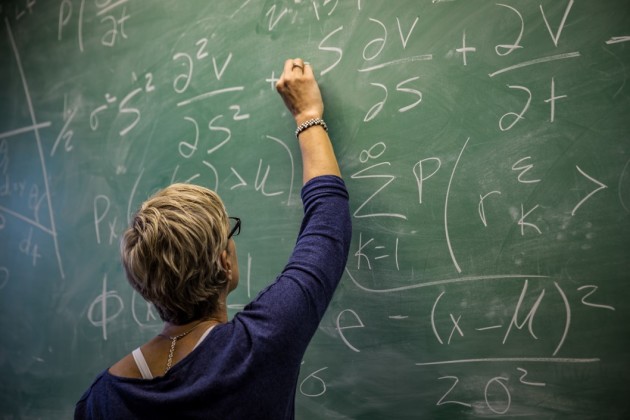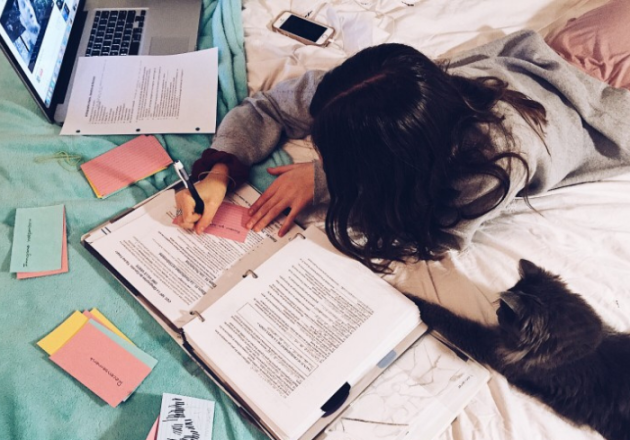
Back To School: 12 Top Tips for Leaving Cert Maths Success
Maths Teacher and Tacitmaths.ie founder, Diarmuid McCarthy shares his inside secrets and essential advice for any student preparing for Leaving Cert Maths.
Of all the Leaving Cert subjects, Maths is the one that tends to, at best, take up a lot of study time, and at worst, strike crippling anxiety in students.
Diarmuid McCarthy, Maths teacher of 11 years is well versed in the stresses of Maths students and founder of tacitmaths.ie. Tacitmaths.ie is an all-in-one maths revision platform that puts worksheets, exam questions, videos, and most impressively, a set of interactive eLearning Modules at the fingertips of students.

Tacitmaths.ie brings a refreshing approach to the explanation and tuition of the Maths syllabus, and is proven to set Leaving Cert Maths students up for greater exam success.
Here, Diarmuid outlines his 12 Top Tips for students studying for Leaving Cert Maths. Scroll on for his essential advice.
1.The Good News: It’s only September
Do you find you’re not achieving your potential in class tests so far? Don’t panic! Particularly when it comes to Maths, most students find it difficult to make it all click at this stage of the year. This sense of frustration often continues all the way up to the mock exams.
However, as long you work hard and smart, it all starts coming together. This usually happens around 3-4 weeks before the Leaving Cert exam itself.
2. The Bad News: Hard Work Ahead
Let’s not beat around the bush, to set yourself up for success and achieve what’s outlined in Tip #1, you have a lot of work ahead of you. There are several attributes you need to be a top Maths student, including problem solving ability, and analytical/computational skills.
But your willingness to work hard (and smart) trumps them all! To save yourself pain further down the line, it’s best to just accept this fact now and get to work.

3. Low Hanging Fruit
The aim of the Leaving Cert Maths exam is to promote critical thinking, problem solving and making connections. However, there’s still a significant proportion of what I call ‘low hanging fruit’ on the test.
These are techniques such as solving Quadratics, Cubic Functions, Simultaneous Equations, finding the Mean/Standard Deviation or expressing in Square Form and Proof by Induction (Higher Level only). For example, in the 2020 Leaving Cert Maths Paper 1, up to 25% of the paper was made up of these questions!
Think of these sections as quick easy wins, that with a bit of smart study you can score highly in.
4. Algebra
There’s no avoiding it, Algebra is key to success. Your course is made up of 3 domains: Calculus, Geometry and Statistics, with other smaller domains like Financial Maths and Sequences & Series. Algebra permeates through ALL of these sections.
I often hear students say “Uh, I just can’t do Algebra…”. Unfortunately this mindset won’t do you any favours in Leaving Cert Maths. Instead, think positive, and refer back to Tip #1, #2 and #3 to get your head in the right mindset for tackling Algebra.

5. Making Connections
We’re getting a bit technical here, but one of the key skills in Maths is your ability to make connections. Geometry is a perfect example. Most teachers teach Geometry, Trigonometry and Area & Volume as three separate chapters. But in any Leaving Cert Maths paper, you’ll never see, for example, a Trigonometry question on its own. It is ALWAYS a combination of the three topics above.
The same goes for Probability & Statistics, or Algebra and, well, every other area of the syllabus! You won’t really appreciate this until you have the course almost fully covered. But when you do, you will see these crossovers throughout the exam paper.
6. Get Organised
This is an obvious one, but prepare a Maths checklist and make a study plan. I mentioned working smart in Tip #2. There’s no point putting in the hours if it’s not in an organised fashion. I’ve said it once (maybe even twice) and I’ll say it again, you need to work both hard and smart.
7. Use the Resources Available to You
Imagine the scenario: you are practising an exam question, and you are stuck. What are your options? Look through your notes, books, and past exercises? Go online to find solutions? Ask a friend or family member? Ask your teacher? The answer is all of the above!
The important thing is you need to exhaust all of these outlets until the problem is resolved. The top students are relentless in their desire to solve problems.
An online revision platform like tacitmaths.ie is a brilliant tool to have in your arsenal. An accessible, affordable platform that puts Leaving Cert Maths notes, exam papers, solutions, worksheets, and eLearning Modules at your fingertips.

8. DIY: Do It Yourself
I sometimes ask students how they study Maths. Some talk about going through the book, or reading their notes, or watching videos online. These are all forms of passive learning, and unfortunately they won’t get you very far. To learn Maths, you need to be actively doing Maths.
Firstly, grab an empty copybook, or some blank sheets of paper. Next, ideally, you should start working on exam questions, but exercises from your book or elsewhere might be required first. The key is to be constantly putting yourself in an exam scenario, and working out the questions.
9. Repetition is Key
Another refrain I often hear: “oh I already did this exam question”. It doesn’t matter! A big part of problem solving is muscle memory.
Like a hurler hitting a ball off a wall, the best way to acquire skills is doing them over and over. You need to cover topics over and over. Even if you are repeating some questions, you are still strengthening your brain’s problem solving techniques.
10. Use Solutions Wisely
You have probably been encouraged since 1st year to always check your work using the solutions at the back of your book. This is a good habit to have. However, when students become too reliant on the solutions, it becomes problematic.
The solution to every Leaving Cert Maths question is available on YouTube. This potentially is a wonderful resource, but it should be the absolute last resort. As mentioned in Tip #8, effective learning really only occurs when you work the problems out for yourself.

11.Ask Questions
“The important thing is not to stop questioning”, Albert Einstein. “Successful people ask better questions, and as a result, they get better answers”, Tony Robbins. I could go on. Maths is all about solving problems, and asking questions.
You can obviously work hard at figuring out problems on your own, or with a friend, but you will always reach a stage where you can only go so far on your own. Even the best teachers are still teaching to a class of 20-30 students and might not address your specific questions naturally. By asking him/her a question, you are tailoring your teacher’s teaching skills specifically to your needs!
12. Beware of Self-Fulfilling Prophecies
“Oh I’m terrible at Maths!” “I just can’t do Probability/Algebra etc.” Statements like these are your brain’s go-to move when faced with something difficult. The more these thoughts creep into your head, the more they become reality. Instead, emphasise positive self-talk, and learn to shift that inner dialogue. For example, research shows positive, encouraging self-talk can help athletes with performance.
What’s more, studies suggest people who practice positive self-talk are better at solving problems, thinking differently, and are more efficient at coping with challenges. Back yourself now and it will make a difference on exams day.






